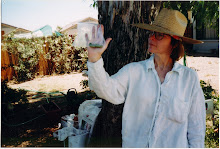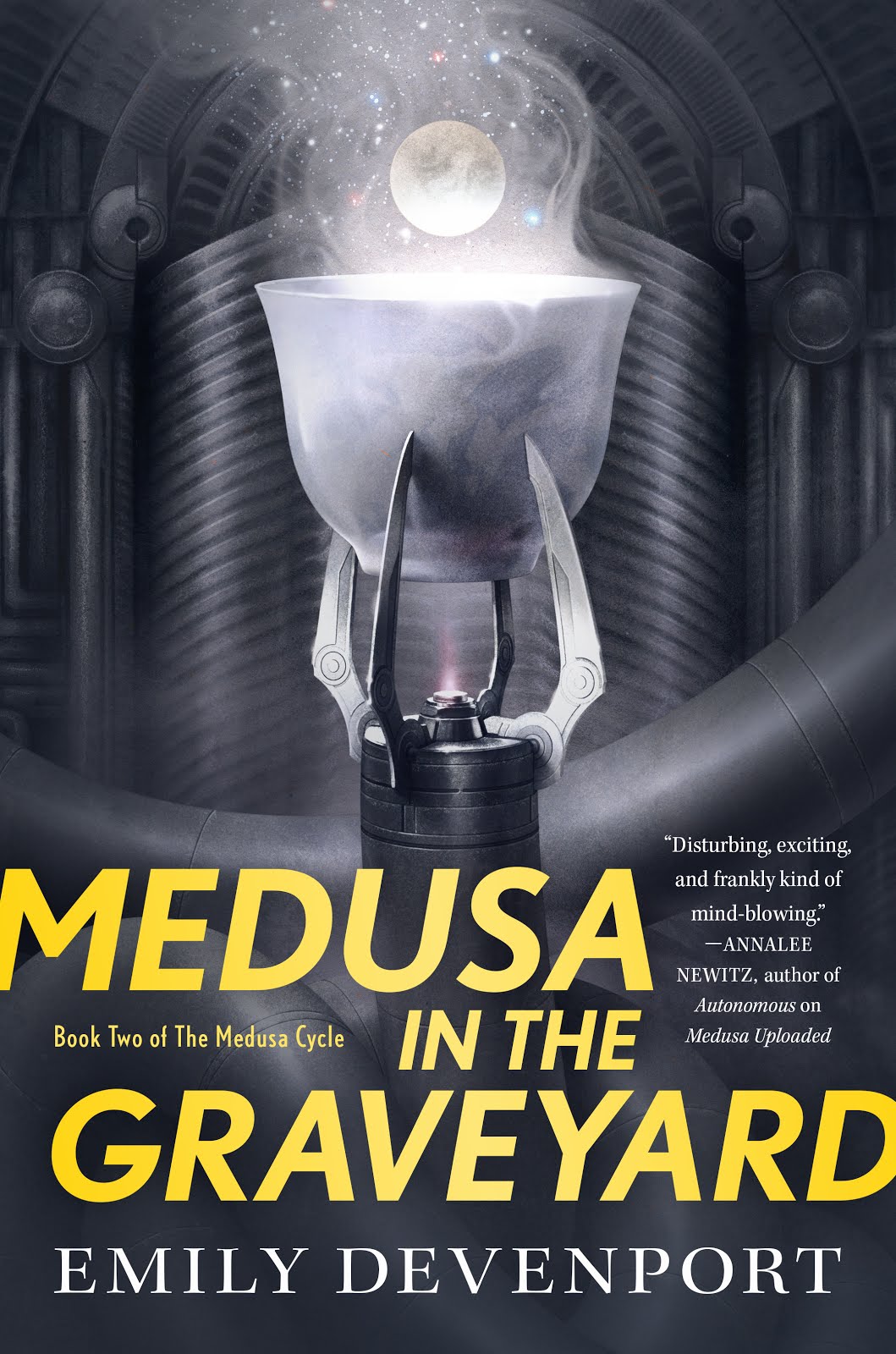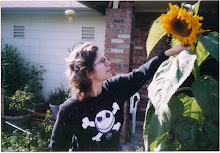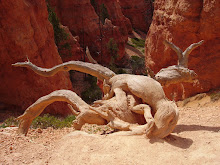
Summer in Phoenix has to be experienced to be believed. The heat can reach up to 123 degrees Fahrenheit, though the average is between 104 and 117. Most of the time the humidity is around 6%. We’re supposed to have a monsoon season, but lately global climate change, or long-term weather patterns, or the heat island effect, or all of the above have conspired to cancel the summer monsoons more often than not. The summer heat in Phoenix isn’t the most uncomfortable, by a long shot -- I think folks in the Eastern part of the U.S. suffer more than we do in the Southwest. But it can be deadly. People and plants feel the withering breath of the dragons of summer.
You might think that’s a problem for gardeners. But it can be helpful, too. Take my yard, for instance, otherwise known as Yardzilla. For 8 years now, I’ve managed to make a happy place for plants. The problem is, it’s TOO happy. When I started out, I had a nice, Martian Garden. Now it’s turned into a Venusian Jungle.
The reason is simple. I planted a bunch of water hogs in my yard, especially roses. I made raised beds out of bricks, which was actually a good tactic. But I had so many tubs full of water-sucking flowers, so many beds full of roses, that the heavy clay soil in my yard became saturated over the years, and that allowed a pernicious devil to enter the picture: grass.
In Phoenix, the grass that survives the best during the heat has an amazing talent for sending tuber-like roots deep into the soil. I once tried to dig it out of a bed it had invaded. When I had dug down 3 feet and still hadn’t found the end of it, I realized that I could theoretically dig down many more feet than I would care to dig, perhaps 10, or 100, or even 1000. This stuff doesn’t need sunlight to survive, it can go dormant for years. Once it gets water, it begins to spread in all directions. When it reaches the surface, it can grow trailers for several feet. That’s what it has done in my yard.
Roses are lovely things, and you can easily get addicted to them. But eventually, a rose bush gets old and wretched, featuring more thorns and barnacles than blooms. That’s for the best -- it’s easier to dig them up when they look that bad. I dug up every rose bush but one in my front yard (the English rose Grahame Thomas is the sole survivor -- it’s a great rose). I’ll do the same in the back. I’ve banished other flowers that want too much water and have shifted toward desert/xeriscape plants that only need to be watered once a week in the summer. The grass is beginning to die from lack of water.
But I still have to dig it up, and I suspect this will take all summer. I can’t work all day at it, because the heat is exhausting. If I’m not careful, I can end up in trouble before I know it -- it’s too easy to get wrapped up in what I’m trying to do and end up overheated. My husband Ernie checks on me constantly, and insists on dragging the big stuff to the trash pile when he sees me struggling. By then I usually have to call it a day and go inside.
But, what the heck. This year, because I’m pouring a lot less water into the yard, the dry summer heat will help do my job for me. And I get to plant all sorts of weird cactus and succulents, a new addiction. Desert shrubs are gorgeous, and my resident hummingbird loves the flowers. And I still have a couple of roses -- just not 24!
And my water bill is lower. That probably should have been my number 1 consideration. Live and learn (and yank grass until the cows come home) . . .














